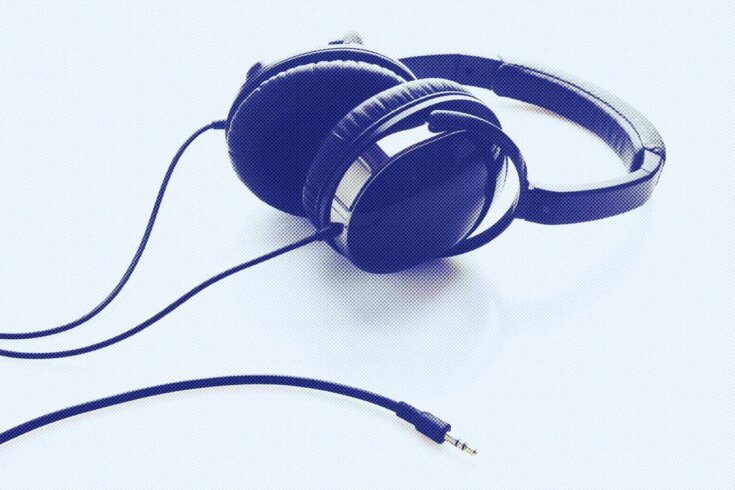At some point in journalism school, I decided it was my dream to write for Pitchfork. I wanted to be an “arts and culture writer,” not because I thought it was a job I’d actually get but because I was one of those artsy gay J-school kids who didn’t want to be in broadcast and didn’t want to write news. To deepen my knowledge of music, I committed to reading Pitchfork every day, which was known for its regular, incisive music criticism. I used to fill my notebook with handwritten album reviews, bastardizing Pitchfork’s trademark verbose style. I’d study how Stacey Anderson described Lorde’s “percussive delivery” in “bacchanalian bangers” in her 2017 review of Melodrama, or how Paul A. Thompson wrote that Pusha T’s 2018 record Daytona skews “grim and steely.” I graduated from my Moleskine years ago, but I still sneak Pitchfork-esque turns of phrase into my writing.
I’m a religious Pitchfork reader, but I don’t think my dream of writing for them will come true. In January, Anna Wintour, the chief content officer of Pitchfork’s parent company, Condé Nast, announced that her company would fold the music site into its marquee men’s fashion title, GQ. The news was accompanied by a slew of layoffs at the publication, including the dismissal of editor-in-chief Puja Patel. The layoffs are endemic to the industry: notable publications like the Los Angeles Times and Sports Illustrated have also let go of huge portions of their staff. As Ezra Klein writes in his New York Times eulogy for Pitchfork, “the middle is collapsing in journalism,” meaning that unless a publication is an enormous operation or a boutique blog, it can’t sustain itself in the current media ecosystem. Marrying Pitchfork with the more robust GQ is another step in this hollowing out of the middle. The future of niche but mighty publications like Pitchfork is shrouded in uncertainty, but we can be certain of one thing: Pitchfork will be a shell of its former self.
Pitchfork was a part of the online news boom of the early twenty-first century, ascendant alongside bloggy sites like BuzzFeed News and Vice. Founded as an independent blog, its popularity snowballed in the late ’90s. By the mid-2000s, it was a cultural behemoth.
What Pitchfork offers over its competitors is a sweeping view of the current music landscape. It usually publishes multiple reviews every weekday, a review of a notable reissue typically on Saturdays, and a long-form review of a classic album on Sundays. The regular Pitchfork reader enjoys an expansive knowledge of the best music out there, spanning genres and nations and decades. All artists, no matter their popularity, are refracted through the lens of Pitchfork’s ten-point scoring system. In a digital world, where most don’t crate-dig in record stores and where algorithms happily feed us milquetoast pop, Pitchfork digs for us, sifting diamonds from dirt.
Pitchfork’s curation played a major role in shaping my music taste. If an album earned a “Best New Music” designation, Pitchfork’s coveted label for excellent releases, I’d listen to it and learn to love it. Countless albums have changed my life because Pitchfork told me to like them. The mind-bending production of Kelela’s Take Me Apart and Sophie’s Oil of Every Pearl’s Un-Insides imploded everything I thought I knew about what pop production could sound like. The intimate, simple songs on Waxahatchee’s Saint Cloud and Indigo De Souza’s Any Shape You Take brought me comfort in dark times.
With Pitchfork gutted, we stand to lose music’s most relevant tastemaker. Several publications still cover music, like Rolling Stone and Stereogum, and there are sites that cast a critical eye on new releases, like Consequence. But Stereogum lacks in-depth coverage of new releases, Consequence’s music coverage is anemic, and Rolling Stone is too generous in its reviews to retain credibility (they called Taylor Swift’s sleepy Midnights an “instant classic”; Pitchfork gave it a modest 7.0).
The Pitchfork stamp of approval could make an artist’s career. They were early champions of Vampire Weekend, Arcade Fire, Bon Iver, Sufjan Stevens, Clipse, M.I.A., and Animal Collective—all singular artists who harnessed indie cred to change what good music was supposed to sound like. Pitchfork’s praise conferred prestige, signalling to the world that these were musicians to watch.
But its praise was only meaningful because its writers weren’t afraid to critique. A harsh review could sting. When it panned Halsey’s 2020 album Manic, the pop star tweeted: “can the basement they run [Pitchfork] out of just collapse already.” (The tweet was in poor taste to say the least—Condé Nast runs its American publications out of the World Trade Center.) The score at the top of a Pitchfork review is like a grade on a final exam; it could alter the course of your career. Though its power to anoint may have waned in recent years, Pitchfork can still make and break artists. Why, then, will it become a charge of GQ? Why didn’t Condé Nast invest in what was arguably its most culturally relevant title?
W hile ads reportedly made up the majority of Pitchfork’s revenue, I’ve never been clear on how Pitchfork stays afloat. I’ve been a devoted reader for half a decade and I haven’t paid a cent for its content. The Pitchfork Music Festival, which has run since 2006 and expanded to several cities across the world, is reportedly lucrative. But good newsrooms aren’t cheap.
“This is an extraordinary moment for us,” read a Pitchfork press release published after Condé Nast acquired it in 2015. The article cited Pitchfork’s success in events and online publishing and struck an optimistic note about working with Condé Nast’s “experience and resources.” According to Noisey, loyalists were concerned that Pitchfork would abandon its independent mandate in favour of a corporate agenda; fans were assured Condé Nast’s infrastructure would bolster Pitchfork’s existing mission.
Condé Nast announced in early 2019 that it would put all its digital publications behind a paywall by the end of that year. “When you put a price tag on something, that must mean you have confidence in the product,” Pamela Drucker Mann, Condé Nast’s global chief revenue officer and president, said at the time. But for reasons that were never clear, that price tag wasn’t extended to Pitchfork. Many of the corporation’s other publications, like GQ, Vogue, and The New Yorker, have been paywalled for years. Pitchfork, however, does not have a print magazine, although they did try it with the quarterly print journal The Pitchfork Review, which published eleven issues between 2013 and 2016 before folding. Nowadays, you couldn’t pay for Pitchfork’s content if you wanted to.
Implementing a paywall would have given Pitchfork’s readers an opportunity to support it while liberating its staff from having to conjure money out of thin air. Instead, Condé Nast bought it, failed to set it up for success, then cut it up as soon as it became a burden.
Pitchfork’s downfall is sobering for anybody who, like me, once believed a publication’s excellence and influence could be enough to stave off corporate pressure. But Pitchfork is not dead. As of this writing, the magazine still chugs along: it still publishes regular content, a Pitchfork Music Festival is scheduled for June in Chicago, and they even sent a correspondent to cover the Grammy Awards red carpet.
Call me naive, but Pitchfork’s arranged marriage with GQ could infuse it with much-needed life. The combination reminds me of the snappy pop culture vertical Vulture, which began as a column of New York Magazine and has expanded into a (paywalled) cultural force in its own right. My hope is that Condé Nast will follow suit and recognize Pitchfork for what it is: a product worth paying for.





